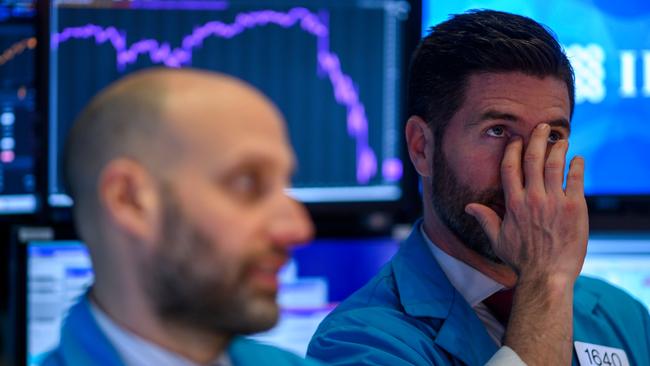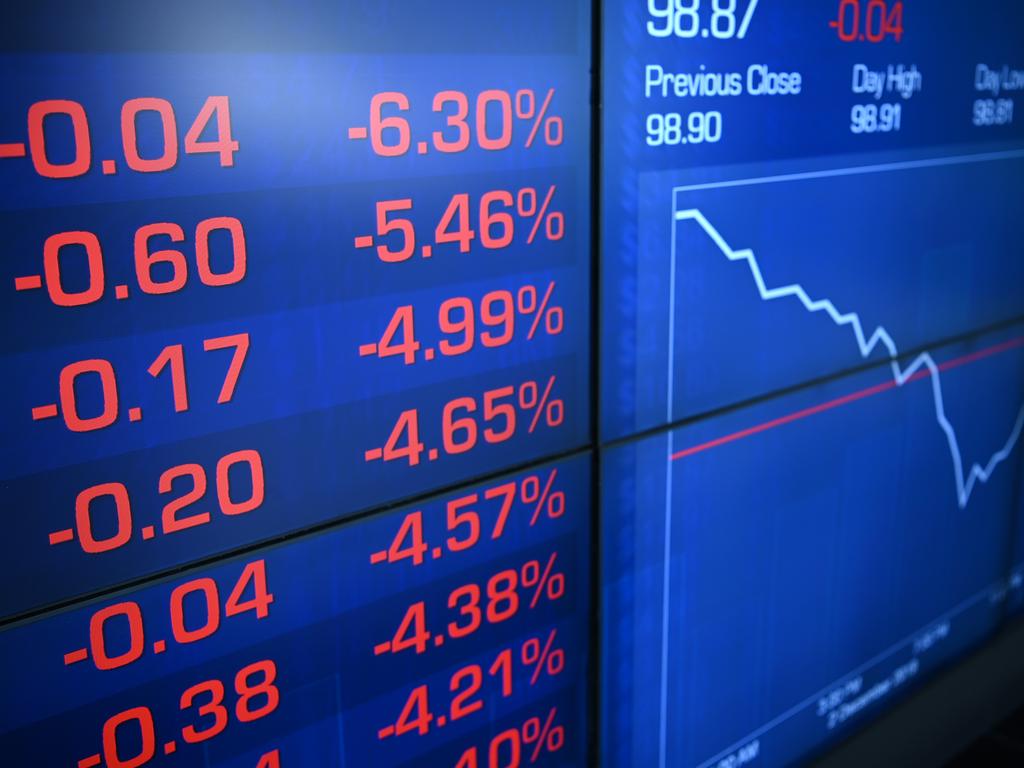
A 7.3 per cent dive in the benchmark S&P/ASX 200 puts this Black Monday right in the GFC zone. And like the GFC — which delivered its own twists and shocks to the financial system over years — this one is still to play out.
With limited ammunition in the form of interest rate cuts, how policymakers and regulators respond in coming weeks will determine the pace of a recovery.
The crash in oil prices is signalling a recession; likewise crumbling long-term bonds (including Monday’s near inversion of the Aussie 10-year bond). Just three weeks ago equity markets were celebrating the boomtime with many staid industrials trading on earnings multiples way over their long-term average.
The old truism remains that the higher the yield (or in this case the PE), the harder they fall.
Nearly 12 years ago the financial crisis spread from toxic debt instruments into a freezing of debt markets. This crunched equities, which had been pushing record highs, and triggered a northern hemisphere recession that mutated into a European debt market crisis. Underlying all this was a lack of money flowing through the system.
This time a viral pandemic crunching a supply chain in China has now spread out into a global economy addicted to ultra-low interest rates.
Entire towns are in lockdown. Workplaces are on edge. Supply chains not only collapsed in China, they stand to fall apart around the world. Confidence has been sapped. And the policy response of central banks — cutting rates — is running out of steam.
For shoppers, the reaction has been to stockpile staples for the sake of caution. For investors it means yanking funds out of money markets and parking them in treasuries or gold. And investors plan to keep their funds there until the storm passes, which again is cutting off the free flow of money.
Indeed for a period in February high-yielding debt markets — junk bonds — essentially shut down. No one wanted to raise funds or roll over debt in a storm.
Super funds (including the Future Fund) have been building up holdings of junk debt to chase yield in an ultra-low rate world but now no one wants to touch it. Writedowns are looming.
Elsewhere, the fast growth in equity-like instruments such as exchange-traded funds is being tested in a market downturn. They are another potential stress point for markets which have enjoyed years of low interest rate support.
Longer-term market watchers have seen this script before. The global volatility of the recent weeks — captured daily on the business pages and across the The Australian’s digital platforms — has become more pronounced. Still, Australian shares have been behaving slightly more cautiously than global counterparts. When Wall Street had a bounce, local shares only cautiously followed.
The key is to watch the banks. The major lenders (which sit at the heart of the domestic economy) have been moving in lock-step with the broader market.
All that changed on Friday when credit markets gave way, again stoking fears of a credit crunch and potential recession-induced loan book damage. On Monday losses in three of the big four — ANZ, NAB and Westpac — delivered outsized moves to the broader ASX. Only CBA — the nation’s biggest bank — fell at a slower rate than the index.
There are bright spots, to be sure. While corporate Australia on the whole was underwhelming in the December half reporting season, corporate balance sheets remain in relatively sound shape. Labour markets too remain tight.
But households are in a tougher place. Household debt remains at a record levels, which combined with low wages growth and the prospect of low investment returns, gives the shoppers in the suburbs limited firepower to lead the economy out of any downturn.







Investment markets have finally given in to the gnawing panic that’s been sweeping suburban supermarkets over the past fortnight.